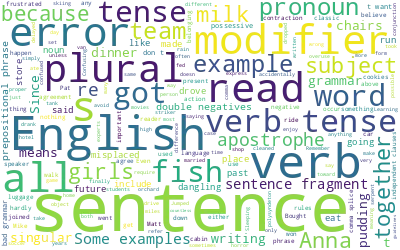An article is a word that modifies a noun.
If you are learning English online, there are two different types of articles: the definite article (the) and the indefinite article (a/an).
In accord with the designations, the indefinite article is used when we speak about something for the first time, or something non-specific. The definite article is used when we speak about something specific or something that has already been mentioned in the conversation.
Many languages in the world use articles, but just as many languages don’t have them at all. So there is no reason to panic if your native language does not use articles.
The following eight rules regarding the use of the articles in English will help you make fewer mistakes when you speak English.
It is very important to be able to use the articles properly, both when writing and speaking.
When to Use “the” in English
“The” is typically used in accompaniment with any noun with a specific meaning, or a noun referring to a single thing. The important distinction is between countable and non-countable nouns: if the noun is something that can’t be counted or something singular, then use “the”, if it can be counted, then us “a” or “an”.
For example:
- John is the best at piano. (there can only be one who’s best)
- Lions are the most dangerous animal. (there can only be one most dangerous)
- We are going to the ballgame tonight. (referring to a specific game)
1. With the names of countries and continents
In these instances we do not use the articles at all, BUT if the country is made up of different parts or if the name is taken from common nouns, for example USA, UK, UAE, then we use the article the and say the USA, the UK, the UAE, the Czech Republic, the Netherlands.
It is the same when speaking of continents and islands. It is not used at all with the continents. We usually do not use an article when speaking about islands, but if the name is made up of different parts, then use the definite article.
For example, Africa, Europe, Bermuda, Tasmania, BUT the Virgin Islands, the Bahamas
- She lived in America.
- They live in England.
- My friend is from the Czech Republic
- I will go to the Galapagos Islands next year.
2. With the words breakfast, lunch, dinner
When it comes to eating in general, the article is not used. But if you are speaking about a particular breakfast, lunch or dinner, use the.
For example:
- I don’t eat breakfast.
- We didn’t like the dinner.
3. With the names of jobs and professions
In these instances, use the indefinite article a/an.
For example:
- I want to be a politician.
- My younger brother wants to be a vet.
4. With compass directions
Compass directions are written with capital letters when they designate definite regions (the North, the South, the East, the West), but not when they indicate direction or general location.
If the compass direction follows a preposition or if it designates a definite region, use the definite article the. If it follows a verb, no article is used.
For example:
- They went east.
- Look to the north and you will see the lake.
- The North is cooler than the South.
5. With names of oceans, seas, rivers, and canals
Remember that the definite article is always used with these bodies of water.
For example, the Amazon, the Indian Ocean, the Red Sea, the Suez Canal.
- I would like to swim in the Red Sea, and you?
- The Amazon is the longest river in the world.
6. With the names of unique objects
This means that only one of the object or thing exists; it is one of a kind. Specifically, the sun, the moon, the internet, the sky, the earth.
For example:
- The sun is a star.
- We looked up at all the stars in the sky.
- He is always on the internet.
7. With uncountable nouns
Uncountable nouns are nouns that we cannot count. A way to identify these nouns, in most cases, is that they do not add –s in the plural form.
But remember that for every rule there are many exceptions. If you are speaking about any uncountable noun in general, do not use the article. But when speaking about something specific, the is used.
For example:
- I like bread/milk/honey.
- I like the bread/the milk/the honey. (specific bread/milk/honey)
8. With surnames
When speaking about members of the same family collectively, the article the is used before the surname. In this way, you designate a group of people –a family – with one word. Remember, the surname must be in the plural form.
For example:
- The Smiths are coming for dinner today.
- Have you seen the Johnsons recently?
This information does not cover all the uses of the articles in English. However, remember these rules as a start, and gradually increase your knowledge of English grammar.
Good luck!


